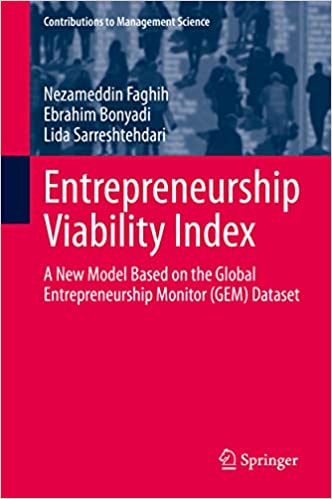This book presents the Entrepreneurship Viability Index (EVI) as a focal point to define other novel indices. It also introduces readers to new concepts and metrics of entrepreneurship to help measure the lifespan of entrepreneurial activities and quantify the capabilities of entrepreneurs as well as the share of efficient businesses at the country level. Using a variety of mathematical models and providing details for each category of business, EVI is measured as the ratio of the ‘rate of entrepreneurial activities’ to the ‘rate of exit from the business’, reflecting the sustainability, durability, business success, and status of entrepreneurial activities in a country. These metrics offer a unique opportunity for researchers and policymakers to assess the status of efficient entrepreneurial activities, which influence the economy, and to study economic resistance in the event of economic shocks or recessions.
The book provides valuable information on various key concepts in entrepreneurship, such as the interaction of individual and environmental factors, motivation and entrepreneurial activities, which allow the prediction of entrepreneurship treatment across countries. This in turn plays a significant role in identifying the factors that secure or threaten a country’s business sector. The book helps readers, researchers, policymakers, lenders, 'angel investors' and anyone with a financial interest in entrepreneurial businesses to understand how even more viable businesses could be created than is the case today, and to recognize new categories of budding entrepreneurs.











